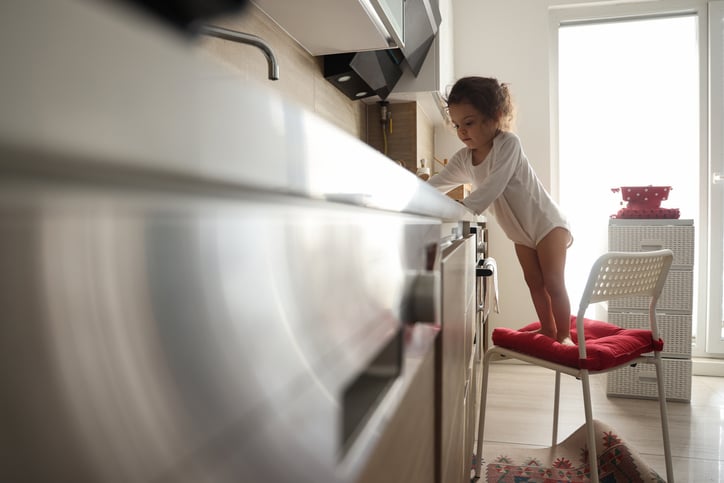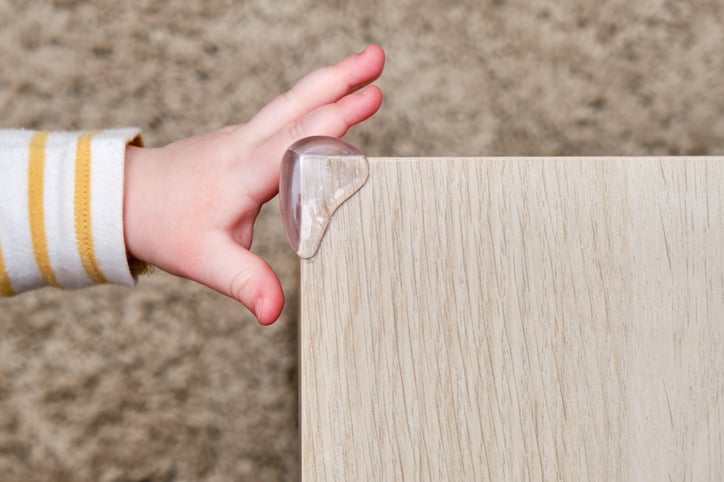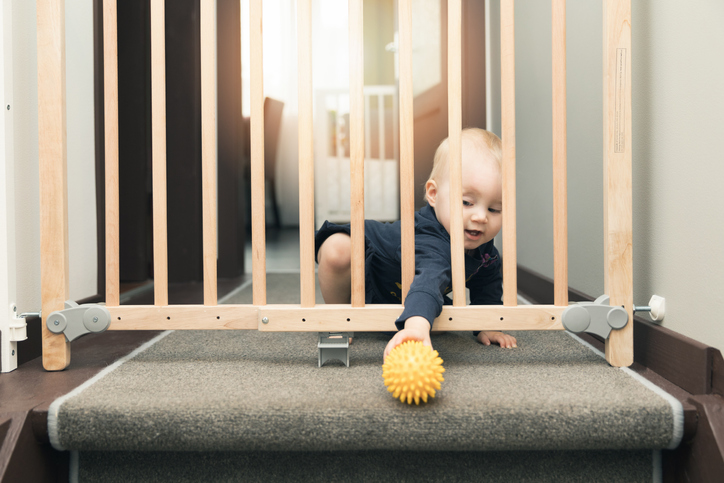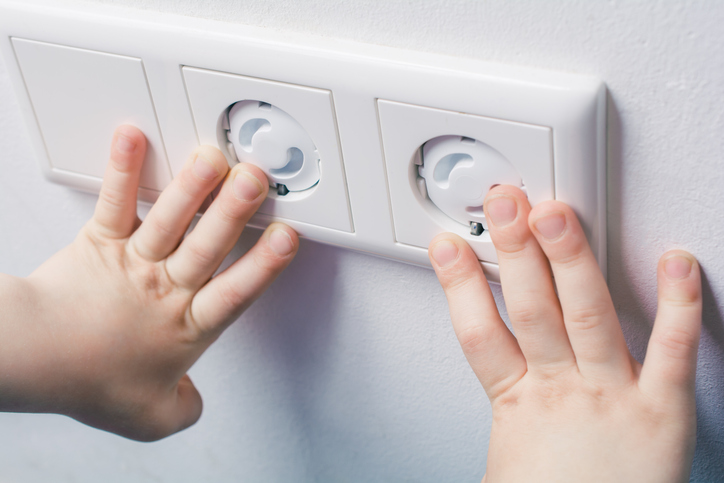When it comes to childproofing your home, identifying common household hazards is the first step in safeguarding your children from potential accidents. From sharp objects to electrical hazards, such as outlets and cords, being aware of these dangers enables parents and caregivers to take proactive measures.

Securing cabinets and drawers is important in preventing children from accessing harmful substances or sharp tools that could cause harm. Installing safety gates and childproofing windows also helps to create barriers and eliminate risks of falls or cord-related accidents. Additionally, paying attention to outdoor areas and pet safety further enhances childproofing efforts, ensuring that children can safely explore their surroundings.
Table of Contents
- Identifying Common Household Hazards
- Safety Gates and Window Childproofing
- Securing Cabinets and Drawers
- Childproofing Outdoor Areas and Pet Safety
- Creating a Safe Nursery or Child’s Bedroom
- Indoor Play Area, Toy Safety, and Teaching Children
- Bathroom, Kitchen, and Medication Safety
- Blinds and Curtains Safety and Evaluating Childproofing
- Take Away
Furthermore, creating a safe nursery or child’s bedroom by ensuring that cribs and furniture are securely set up should be considered. Indoor play areas must be designed with safety in mind, and age-appropriate toys should be selected to reduce potential hazards. Equally important is educating children about safety rules to empower them with the knowledge to avoid dangerous situations.
Also considering bathroom, kitchen, and medication safety enhances the overall childproofing approach and minimizes the risk of accidents. Lastly, evaluating the effectiveness of childproofing measures allows parents and caregivers to identify any potential gaps and take necessary actions to strengthen the safety measures.
By understanding and addressing these topics in childproofing, parents and caregivers can create a secure and nurturing environment that supports a child’s healthy development. Childproofing consists of many steps, however, it is worth it for the safety of your child.
Identifying Common Household Hazards
Childproofing your home begins with a thorough assessment of potential hazards that might be present within your living space. Common household items that can pose dangers to children include sharp objects, such as knives and scissors, which should be stored securely out of reach. Chemicals, including cleaning products and medications, must be kept in locked cabinets to prevent accidental ingestion.
Electrical hazards can be found throughout the house, and it’s crucial to address them. Covering electrical outlets with safety plugs or using outlet covers helps prevent children from inserting small objects, reducing the risk of electric shock. Ensuring cords from electrical appliances like irons and hairdryers are tucked away or managed with cord organizers can prevent tripping and entanglement accidents.
Moreover, appliances with accessible controls, like stoves and ovens, should be equipped with safety knobs or guards to prevent curious hands from turning them on. Being attentive to potential hazards in every room of your home allows you to take proactive steps to safeguard your children from avoidable accidents.
Safety Gates and Window Childproofing
It is important to assess the risks that stairways and windows pose to your children’s safety when childproofing your home. Safety gates and window guards should be utilized as preventative measures against falls.
Safety Gates
When childproofing your home, safety gates play a crucial role in restricting access to stairways and potentially hazardous areas. Brands like Evenflo, Summer Infant, and Regalo offer a wide range of safety gates suitable for various openings. Pressure-mounted gates are ideal for easily adjustable and temporary barriers, while hardware-mounted gates provide a more secure and permanent solution.
The effectiveness of safety gates depends on proper installation. Follow the manufacturer’s instructions carefully and use appropriate mounting tools for a sturdy fit. Regularly check the gates for any signs of wear or damage and make necessary adjustments as your child grows.
Childproofing Windows
Windows can pose serious risks to children as falls can occur. Window guards are an effective solution for ensuring window safety, especially in higher floors of the house. Brands like Safety 1st and Guardian Angel offer durable window guards designed to prevent accidental falls while still allowing adults to open the window for ventilation.
Corded window blinds and shades can also be hazardous, as children may become entangled in the cords. Opting for cordless blinds or cordless window treatments from brands like Bali Blinds and Levolor ensures added safety in areas where children spend time. These cordless options not only eliminate the risk of strangulation but also provide a sleek and modern look to your home.
By implementing safety gates and childproofing your windows with appropriate solutions, you create a secure environment for your children to explore, play, and grow safely within the boundaries of your home.
Securing Cabinets and Drawers
It is important to secure kitchen and bathroom cabinets as it keeps harmful substances and dangerous items out of children’s reach. Brands like Safety 1st and Dreambaby offer a range of cabinet locks and latches that are easy to install and provide an extra layer of protection. Magnetic cabinet locks are popular choices as they remain hidden from view and require a magnetic key to unlock, making them difficult for young children to tamper with.
Childproofing options such as cabinet drawer locks and straps are also available to prevent children from gaining access to sharp objects, cleaning products, and medications that may be stored in drawers. Brands like Adoric and Jambini offer durable and reliable drawer locks that can be easily installed without damaging your furniture.
Regularly inspecting cabinet locks and ensuring they are functioning correctly is essential, as children can be quite persistent in their attempts to explore forbidden areas. Securing cabinets and drawers provides peace of mind to parents and caregivers, knowing that potentially hazardous items are safely kept out of their children’s hands.
Childproofing Outdoor Areas and Pet Safety
Childproofing exists in the indoor environment and outdoor areas where children often play and explore. When childproofing the backyard and play areas, be sure to assess potential hazards such as uneven terrain, sharp objects, and potential entrapment areas. Installing safety gates or fences around the perimeter of the yard helps create a secure play space, especially if there is a swimming pool or other water features nearby. Brands like Cardinal Gates and North States offer durable and weather-resistant outdoor safety gates suitable for various outdoor settings.
When visiting others’ homes or staying in hotels it is important to still be aware of what childproofing steps have been taken. Portable safety gates like the Summer Infant Pop ‘N Play Portable Playard can be a handy solution for creating a safe play area on the go. Additionally, carrying childproofing essentials such as cabinet locks, outlet covers, and corner protectors can help make unfamiliar environments safer for your child.
As pets and children often interact closely in the home it is also important to consider pet safety in childproofing. Establish boundaries and supervise their interactions to prevent potential incidents. Educating children on how to interact safely with pets, such as not pulling their tails or ears, helps foster a positive and safe relationship. Furthermore, keeping pet food, water bowls, and litter boxes out of children’s reach and ensuring pets have their safe spaces to retreat to when needed enhances pet safety within a childproofed home.
Creating a Safe Nursery or Child’s Bedroom
There are several aspects to consider when setting up a child’s room. Starting with the crib, choose a crib that meets the safety standards set by organizations like the Juvenile Products Manufacturers Association (JPMA) and the Consumer Product Safety Commission (CPSC). Brands like Graco and Delta Children offer a wide range of cribs that meet these safety standards and provide features like adjustable mattress heights and teething rails.
To prevent accidental falls or entrapment, avoid placing the crib near windows, blinds, or curtains with cords, as they pose potential hazards. Securely fasten furniture, such as dressers and bookshelves, to the wall to prevent tipping over, especially as children grow and may attempt to climb. Furniture anchors like the Safety 1st Furniture Wall Straps offer reliable and easy-to-install solutions to keep furniture secure.
Investing in electrical safety measures is also important in a child’s room. Cover electrical outlets with safety plugs or outlet covers to prevent children from inserting objects into them. Keep electrical cords from lamps and other devices out of reach or manage them with cord organizers to prevent strangulation hazards.
Implementing these essential safety measures in a child’s room allows parents and caregivers to create a secure and nurturing environment for their children as they grow.
Indoor Play Area, Toy Safety, and Teaching Children
Creating a safe indoor play area and stimulating a child’s development can be achieved by designating a specific area in your home for play, free from potential hazards and with easy visibility for supervision. Plush foam play mats, like those from Skip Hop or ProSource Kids, offer a cushioned and non-toxic surface for babies and toddlers to explore, crawl, and play safely.
When selecting toys, prioritize those that are age-appropriate and meet safety standards set by organizations like ASTM International or the European Toy Safety Standard (EN 71). Look for toys labeled with the JPMA seal or those made by reputable brands such as Melissa & Doug, Fisher-Price, and LEGO. Avoid toys with small parts that could pose choking hazards for young children. Additionally, inspect toys regularly for any signs of wear or damage and discard broken toys immediately.
Teaching children about household hazards and safety rules should also be implemented. Use clear and simple language to explain safety rules, such as not touching hot stove tops or electrical outlets. Make safety a part of their routine by reminding them to wash their hands after playing outside or before meals. By educating children about potential dangers and the importance of safety, they can learn to recognize and avoid risks, fostering a safer environment for themselves and others.
Bathroom, Kitchen, and Medication Safety
Adequate safety measures should be taken in the bathroom to prevent accidents around the bathtub and toilet. Installing non-slip mats both inside and outside the bathtub helps prevent slips and falls during bath time. Brands like Gorilla Grip and Tike Smart offer durable and textured bath mats that provide a secure surface for kids.
Using toilet seat locks, like those from Mommy’s Helper or Munchkin, which prevent children from opening the toilet lid and accidentally falling in is also helpful. Keep cleaning products and medications out of reach by using high-mounted cabinets or childproofing cabinet locks, as mentioned earlier in Section 3. Store medications in a locked and childproof container, such as the Safety 1st SecureTech Medication Storage Box, to prevent accidental poisoning.
Extra precautions are necessary in the kitchen, especially during cooking. Use the back burners of the stove when possible and turn pot handles inward to prevent children from reaching and accidentally tipping hot pots or pans. Use knob covers, like those from Safety 1st, to prevent young children from turning on the stove or oven. Keep sharp knives and other hazardous tools securely stored in locked drawers or out of reach using childproofing straps.
Electrical appliances and cords can be potential hazards if not managed properly. Use outlet covers or plugs, like those from Safety 1st or Dreambaby, to cover electrical outlets and prevent children from inserting small objects. Utilize cord organizers, such as those from Cable Concealer and J Channel, to keep cords from appliances, like blenders and toasters, neatly arranged and out of reach.
Implementing these bathroom, kitchen, and medication safety measures can significantly reduce the risk of accidents and potential injuries, creating a safer home environment for children to grow and explore.
Blinds and Curtains Safety and Evaluating Childproofing
Blinds and curtains with pull cords or chains can pose serious strangulation hazards for young children. Consider using cordless window treatments or blinds with cordless options, such as those offered by Bali Blinds, Levolor, or IKEA. These cordless alternatives not only eliminate the risk of entanglement but also provide a modern and sleek appearance to your windows.
Conduct a thorough inspection of each room when evaluating the overall childproofing effectiveness of a home. Check for any potential hazards that might have been overlooked and make necessary adjustments. Brands like Safety 1st and KidCo offer comprehensive home safety kits that include various childproofing essentials, such as outlet covers, cabinet locks, and door knob covers, providing a convenient and cost-effective solution for childproofing a home.
Regularly reassessing and updating childproofing measures should be done regularly to maintain a safe environment. As children become more curious and adventurous, implementing appropriate child-proofing measures and staying one step ahead can ensure their safety within the home.
Take Away
Childproofing your home is crucial for creating a safe environment for kids. By identifying hazards, securing cabinets, installing safety gates, and addressing window safety, we can reduce the risk of accidents. Teaching children about safety and regularly updating childproofing measures further enhances their protection. Let’s prioritize their well-being and ensure our homes are secure spaces for our little ones to grow and explore safely.




